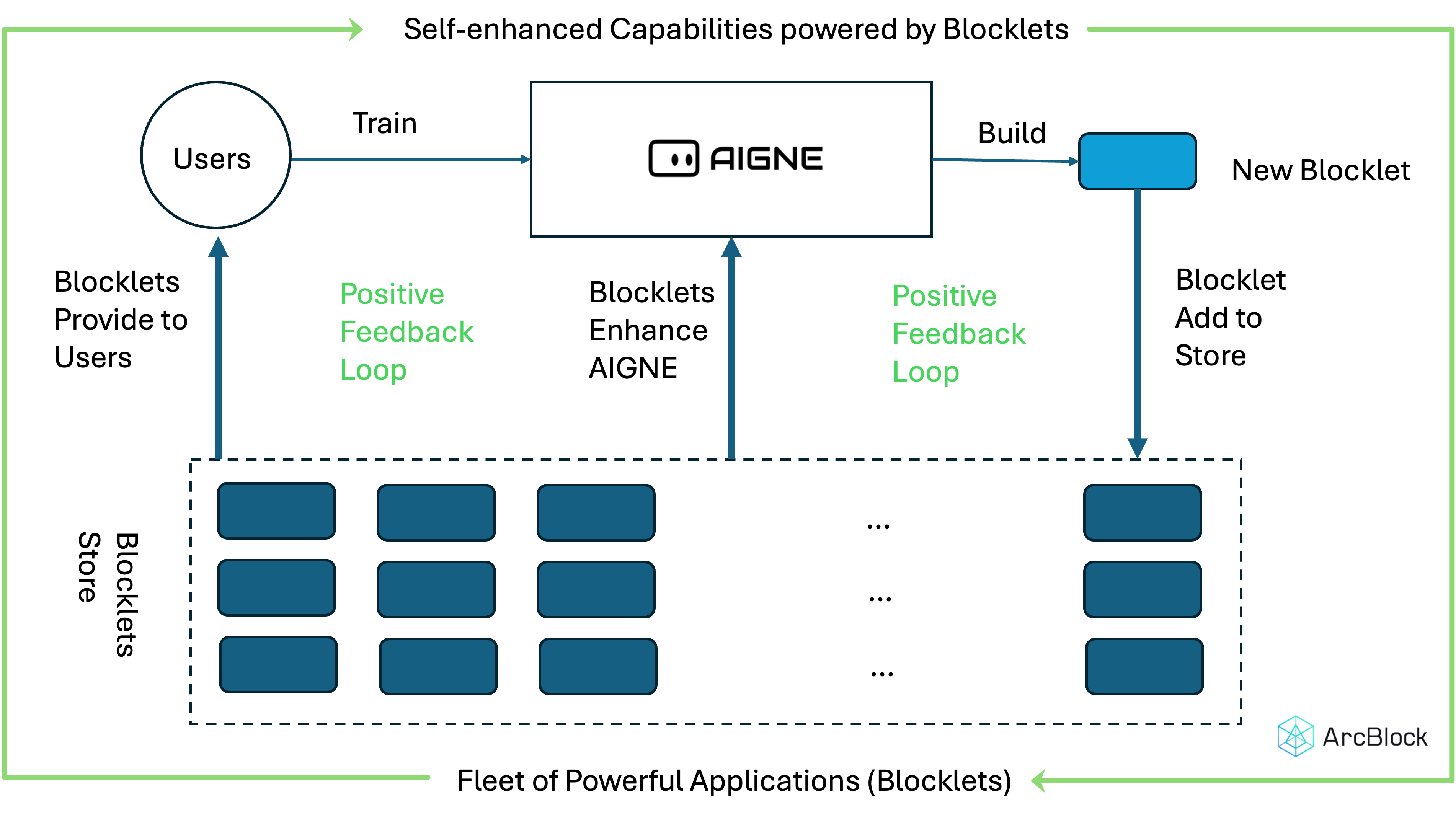Welcome
Getting Started
How to Guides
Application vs Blocklet
Create Blocklet
Compose Blocklets
Develop Blocklet
User and Passport
Communicate with DID Wallet
Blocklet Storage
Using Blocklet Preferences
Using Blocklet Logger
Add PWA Integration to Blocklet
Build blocklet for profit [deprecated]
Bundle your blocklet
Manage Blocklet Versions
Publish your blocklet to the world
Deploy your blocklet
Read/Write blockchain in blocklet
Operation your blocklet
Reference Guides
DID Connect
blocklet.yml
blocklet.js
Blocklet SDK (Node.js)
Blocklet SDK (Browser)
Blocklet Service
Blocklet CLI
Blocklet Server CLI
Blocklet UI
Blocklet GitHub Actions
Blocklet Studio
Blocklet Manager
Security
Performance
Developer Best Practices.
Known Issues or Limitations
Setup Blocklet Server
WebHooks
OAuth Server
Access Key
MCP Servers
Conceptual Guides
Frequently Asked Questions
Integrate Blocklet Studio

Developers of ArcBlocklet should all be familiar with this diagram, which shows how AIGNE utilizes Blocklet Studio and Blocklet Store to form a flywheel effect. AIGNE users can create many applications and publish them to the Store, thereby feeding back into AIGNE's ecosystem. In fact, any developer of a Blocklet can create their own flywheel effect by integrating Blocklet Studio and Blocklet Store.
What types of Blocklets are suitable for integration with Blocklet Studio?#
Most Blocklets do not need to integrate with Blocklet Studio. All Blocklet administrators can use Blocklet Studio by default, but if you want Blocklet users to also use Blocklet Studio, you need to integrate the Blocklet with Blocklet Studio.
A typical scenario for integrating a Blocklet is when your Blocklet needs to provide users with the ability to create Blocklets and distribute them through the Blocklet Store.
Here are some examples of cases where integrating Blocklet Studio is suitable:
- AIGNE integrates with Blocklet Studio, converting each AI application created by AIGNE into a Blocklet and distributing it on Blocklet Store.
- Pages-Kit integrates with Blocklet Studio, converting created Pages components into resource-type Blocklets and distributing them on Blocklet Store.
Seamlessly Integrate Blocklet Studio in Blocklet#
Integrating Blocklet Studio in Blocklet is very simple, just declare it using React components:
import { BlockletStudio } from '@blocklet/ui-react';
<BlockletStudio
mode="dialog"
tenantScope={project.id}
componentDid={MY_COMPONENT_DID}
open={open}
setOpen={() => setOpen()}
onOpened={() => onOpened?.()}
/>Customizing Default Parameters and Optional Resources#
Each project has unique requirements, so users can customize the default parameters and optional resources of the Blocklet Studio creation process. Users can set common parameters and resources in advance according to the specific situation of the project, saving publishing steps. Here is a more complete parameter example:
import { BlockletStudio } from '@blocklet/ui-react';
<BlockletStudio
...
// Information for creating the application
title={project.name || ''}
description={project.description || ''}
note=""
introduction=""
logo={logo}
componentDid={MY_COMPONENT_DID}
// Parameters to pass through to get blocklet resource
resourcesParams={{ projectId: project.id }}
// Whether the user can edit dependent components
dependentComponentsMode="readonly"
// Default selected resources
resources={{
[MY_COMPONENT_DID]: [],
}}
/>Complete component parameters:
interface BlockletStudioProps {
open: boolean;
setOpen: (open: boolean) => void;
onOpened?: () => void;
componentDid: string;
tenantScope?: string;
resourcesParams?: Record<string, any>;
mode?: string;
title?: string;
logo?: string;
description?: string;
introduction?: string;
note?: string;
onUploaded?: (data: unknown) => void; // Callback function after upload
onReleased?: (data: unknown) => void; // Callback function after releasing a new release
onConnected?: (data: unknown) => void; // Callback function after connection
components?: Record<string, unknown>[]; // Default components list
resources?: Record<string, unknown>; // Default resources
componentsTitle?: string;
resourcesTitle?: string;
style?: React.CSSProperties;
zIndex?: number;
dependentComponentsMode?: 'auto' | 'readonly'; // Disable component selection
}
Integrated Effect Demonstration#
By above method, the integrated Blocklet Studio effect of AIGNE internally is as follows:
Multi-tenant mode and Single-tenant mode#
To meet the needs of different users, the new version distinguishes in detail between multi-tenant mode and single-tenant mode. In multi-tenant mode, each user can only manage the Blocklet they created themselves. In Dahboard, we can modify the tenant mode of Blocklet, and Blocklet Studio will follow this configuration, without the need for additional development for different tenant modes.